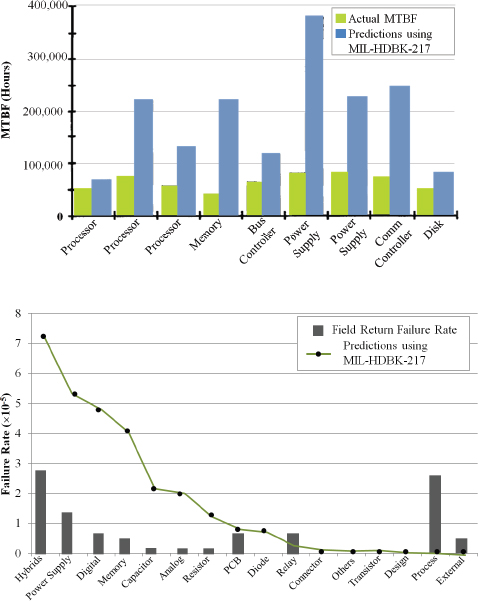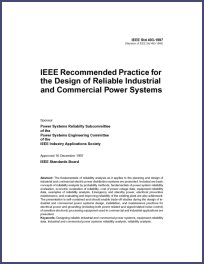Telcordia Sr 332 Handbook To Higher
Telcordia sr 332 handbook for boys. Telcordia sr 332 handbook for boys Read Online. Bellcore previously used MIL-HDBK-217 for their reliability predictions, but found are now choosing to use the Telcordia SR-332 handbook for their reliability. Bellcore (Telcordia) Standard The Bellcore standard predicts the reliability of electronic equipment based on the Bellcore (Telcordia) standards TR-332 Issue 6 and SR. SR332 - Telcordia Issue 3. Issue 3 of SR-332 contains new data for fiber optic transceivers, hard drives, and ferrite beads. Issue 3 of SR-332 contains revised generic device failure rates in Section 8, based mainly on new data for many components. Issue 3 of SR-332 contains an extended range of complexity for devices.
FAQ RelCalc MTBF Software. How do I choose: Telcordia SR-332 or MIL-HDBK-217? Your company's product and customer profile will quite often dictate which reliability prediction handbook to use. For example, you will probably have to use if you have military contracts or customers, or commercial contracts or customers that specify 217 for reliability predictions. While MIL-HDBK-217 is used by both military and commercial companies, it is targeted for military applications, which might explain the somewhat pessimistic numbers it sometimes gives for commercial quality products. Thus, most of our commercial customers, making products such as computers, telecommunications systems, medical systems, and power supplies, choose to use the handbook for their reliability predictions.
Our informal tests comparing 217 and Telcordia MTBF predictions indicate that Telcordia results are usually much better (we saw 25%-450%). Based on reports from our customers, Telcordia seems to give much more realistic results than 217, and Telcordia predicted MTBF results are likely to be more consistent with actual field experience. When choosing between MIL-HDBK-217 and Telcordia SR-332, also keep these points in mind: - Telcordia has 6 environment classifications (4 ground, 1 air, 1 space), while 217F2 has 14 environments (3 ground, 8 air, 1 space, 2 sea). Thus, if your product is used in an air or sea environment, you might want to use MIL-HDBK-217. While MIL-HDBK-217 is targeted for military applications, it does include commercial quality levels for all part models, and it is appropriate to use 217 for commercial products.
The Telcordia part models were originally developed and targeted for commercial applications. Telcordia simplifies the models by generally basing part failure rates on ambient temperature, while 217F2 bases IC and semiconductor failure rates on part junction temperature.
Thus, the Telcordia method is much quicker and easier to use. For high power dissipation parts, note that our Telcordia version of RelCalc does allow you to bump up the operating temperature for any given part. Telcordia SR-332 Issue 3 allows you to specify an Upper Confidence Level (UCL) for the calculations. MIL-HDBK-217 does not specify UCL for its calculations.
The Telcordia model provides a measure of infant mortality failure rate in addition to the steady state useful operating life failure rate, and allows you to specify system, board, and device level burn-in to improve the infant mortality failure rate. MIL-HDBK-217 only calculates the steady state failure rate. Telcordia does not have a specific SMT device model, saying that its data shows no significant difference between conventional and SMT device failure rates. MIL-HDBK-217F-2 does include a specific SMT model, which was developed to assess the life integrity of leadless and leaded SMT devices.
The 217F2 approach requires more work, and our experience has shown that the 217F2 SMT model contribution to the overall board failure rate is usually negligible. The Telcordia failure rate models are more up to date than the 217 models. Telcordia handles larger gate count ICs much better than 217. Both MIL-HDBK-217 and Telcordia are known and used worldwide. If you have questions about choosing between MIL-HDBK-217 and Telcordia SR-332 for your particular situation, please feel free to at any time.
Note that some 20% of our customers buy both versions (we give a substantial price discount for the second version), giving them flexibility for different products, applications, customers, etc.
Software Used In today's competitive electronic products market, having higher reliability than competitors is one of the key factors for success. To obtain high product reliability, consideration of reliability issues should be integrated from the very beginning of the design phase.
This leads to the concept of reliability prediction. Historically, this term has been used to denote the process of applying mathematical models and component data for the purpose of estimating the field reliability of a system before failure data are available for the system. However, the objective of reliability prediction is not limited to predicting whether reliability goals, such as MTBF, can be reached. It can also be used for:. Identifying potential design weaknesses. Evaluating the feasibility of a design.
Comparing different designs and life-cycle costs. Providing models for system reliability/availability analysis. Establishing goals for reliability tests. Aiding in business decisions such as budget allocation and scheduling Once the prototype of a product is available, lab tests can be utilized to obtain more accurate reliability predictions.

Accurate prediction of the reliability of electronic products requires knowledge of the components, the design, the manufacturing process and the expected operating conditions. Several different approaches have been developed to achieve the reliability prediction of electronic systems and components. Each approach has its unique advantages and disadvantages. Among these approaches, three main categories are often used within government and industry: empirical (standards based), physics of failure and life testing. In this article, we will provide an overview of all three approaches. First, we will discuss empirical prediction methods, which are based on the experiences of engineers and on historical data. Standards, such as MIL-HDBK-217 and Bellcore/Telcordia, are widely used for reliability prediction of electronic products.
Next, we will discuss physics of failure methods, which are based on root-cause analysis of failure mechanisms, failure modes and stresses. This approach is based upon an understanding of the physical properties of the materials, operation processes and technologies used in the design. Finally, we will discuss life testing methods, which are used to determine reliability by testing a relatively large number of samples at their specified operation stresses or higher stresses and using statistical models to analyze the data. Empirical (or Standards Based) Prediction Methods Empirical prediction methods are based on models developed from statistical curve fitting of historical failure data, which may have been collected in the field, in-house or from manufacturers. These methods tend to present good estimates of reliability for similar or slightly modified parts. Some parameters in the curve function can be modified by integrating engineering knowledge.
The assumption is made that system or equipment failure causes are inherently linked to components whose failures are independent of each other. There are many different empirical methods that have been created for specific applications. Some have gained popularity within industry in the past three decades. The table below lists some of the available prediction standards and the following sections describe two of the most commonly used methods in a bit more detail. Prediction Method Applied Industry Last Update MIL-HDBK-217F and Notice 1 and 2 Military 1995 Bellcore/Telcordia Telecom 2011 NSWC Mechanical 2011 FIDES Commercial/French Military 2009 MIL-HDBK-217 Predictive Method MIL-HDBK-217 is very well known in military and commercial industries. It is probably the most internationally recognized empirical prediction method, by far.
Telcordia Sr 332 Handbook To Higher Education
The latest version is MIL-HDBK-217F, which was released in 1991 and had two revisions: Notice 1 in 1992 and Notice 2 in 1995. The MIL-HDBK-217 predictive method consists of two parts; one is known as the parts count method and the other is called the part stress method 1. The parts count method assumes typical operating conditions of part complexity, ambient temperature, various electrical stresses, operation mode and environment (called reference conditions). The failure rate for a part under the reference conditions is calculated as: where:. λ ref is the failure rate under the reference conditions.

i is the number of parts Since the parts may not operate under the reference conditions, the real operating conditions will result in failure rates that are different from those given by the 'parts count' method. Therefore, the part stress method requires the specific part’s complexity, application stresses, environmental factors, etc. (called Pi factors). For example, MIL-HDBK-217 provides many environmental conditions (expressed as π E) ranging from 'ground benign' to 'cannon launch.' The standard also provides multi-level quality specifications (expressed as π Q). The failure rate for parts under specific operating conditions can be calculated as: where:. π S is the stress factor.
π T is the temperature factor. π E is the environment factor.
π Q is the quality factor. π A is the adjustment factor Figure 1 shows an example using the MIL-HDBK-217 method (in ReliaSoft’s software) to predict the failure rate of a ceramic capacitor.
According to the handbook, the failure rate of a commercial ceramic capacitor of 0.00068 μF capacitance with 80% operation voltage, working under 30 degrees ambient temperature and 'ground benign' environment is 0.0217 / 10 6 hours. The corresponding MTBF (mean time before failure) or MTTF (mean time to failure) is estimated to be 4.6140 / 10 7 hours. Figure 1: MIL-HDBK-217 capacitor failure rate example Bellcore/Telcordia Predictive Method Bellcore was a telecommunications research and development company that provided joint R&D and standards setting for AT&T and its co-owners. Because of dissatisfaction with military handbook methods for their commercial products, Bellcore designed its own reliability prediction standard for commercial telecommunication products. In 1997, the company was acquired by Science Applications International Corporation (SAIC) and the company's name was changed to Telcordia. Telcordia continues to revise and update the standard.
The latest two updates are SR-332 Issue 2 (September 2006) and SR-332 Issue 3 (January 2011), both called 'Reliability Prediction Procedure for Electronic Equipment.' The Bellcore/Telcordia standard assumes a serial model for electronic parts and it addresses failure rates at the infant mortality stage and at the steady-state stage with Methods I, II and III 2-3. Method I is similar to the MIL-HDBK-217F parts count and part stress methods. The standard provides the generic failure rates and three part stress factors: device quality factor ( π Q), electrical stress factor ( π S) and temperature stress factor ( T). Method II is based on combining Method I predictions with data from laboratory tests performed in accordance with specific SR-332 criteria.
Method III is a statistical prediction of failure rate based on field tracking data collected in accordance with specific SR-332 criteria. In Method III, the predicted failure rate is a weighted average of the generic steady-state failure rate and the field failure rate. Figure 2 shows an example in Lambda Predict using SR-332 Issue 3 to predict the failure rate of the same capacitor in the previous MIL-HDBK-217 example (shown in Figure 1). The failure rate is 9.655 Fits, which is 9.655 / 10 9 hours. In order to compare the predicted results from MIL-HBK-217 and Bellcore SR-332, we must convert the failure rate to the same units.
9.655 Fits is 0.0009655 / 10 6 hours. So the result of 0.0217 / 10 6 hours in MIL-HDBK-217 is much higher than the result in Bellcore/Telcordia SR-332. There are reasons for this variation. First, MIL-HDBK-217 is a standard used in the military so it is more conservative than the commercial standard. Second, the underlying methods are different and more factors that may affect the failure rate are considered in MIL-HDBK-217.

Figure 2: Bellcore capacitor failure rate example Discussion of Empirical Methods Although empirical prediction standards have been used for many years, it is always wise to use them with caution. The advantages and disadvantages of empirical methods have been discussed a lot in the past three decades. A brief summary from the publications in industry, military and academia is presented next 5-9.
Comments are closed.